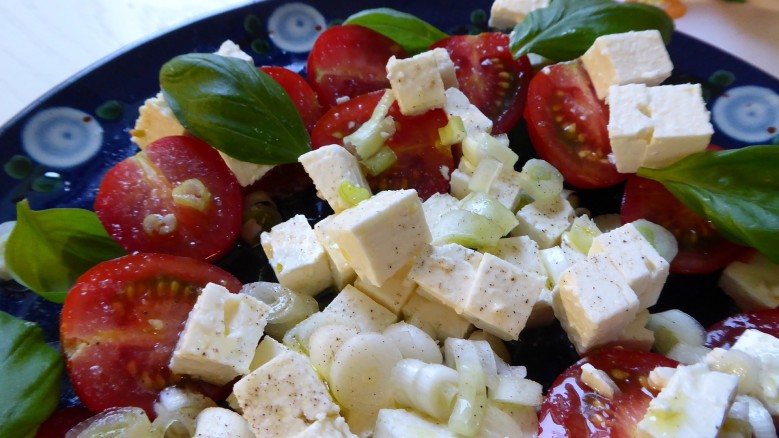If you’re a fan of Greek cuisine, you’ve undoubtedly stumbled across, salivated over and enjoyed more than a casual fling with Feta – arguably one of the biggest heroes of the Greek menu.
So, what are the origins of Feta and why is it used so widely in Greek cuisine?
A focus on Feta
Made from sheep’s milk, or a mix of sheep’s milk and up to 30 per cent goat’s milk, Feta is a soft, creamy yet crumbly cheese that is cured in brine. Its flavour is often described as tangy or salty and ranges from mild to sharp.
The brine in which feta cures can be plain or feature the addition of herbs to add a touch of extra flavor. The cheese can be cured for anywhere between two and 12 months, and this tasty morsel pops up throughout Greek cooking – from salads, to Spanakopita pastries, and more.
The history of Feta
A quick flick through the pages of history reveals Feta dates back to around 8BC, and the technique of making it is even described in Homer’s ‘Odyssey’.
Its origins are likely associated with Greece’s preference for small grazing animals such as sheep or goats, which were better suited to the landscape of the islands than cows.
After more than 2000 years of production and bit of a battle with Denmark, Feta officially obtained certification in 2002, meaning now counties within the European Union can only label a brined cheese Feta if it made using traditional methods exclusively of sheep’s or sheep’s and goat’s milk from the following regions of Greece: Peloponnese, Central Greece, Epirus, Thessaly, Macedonia, Thrace, and the islands of Lesvos and Cephalonia.
How Feta is used
Feta features heavily in Greek cuisine, offering a stunning contrast to other common flavours. You’ll find it as an accompaniment to watermelon as an appetiser, in traditional Greek salads as the salty hero of the dish, within filo based dishes like Spanokopita alongside spinach, and it can also be cooked or grilled or simply used as a sandwich filling.
The health benefits of Feta
Like much of the Mediterranean diet, Feta is believed to offer health benefits. It is lower in fat and calories than aged cheeses like cheddar and Parmigiano-Reggiano, features calcium and phosphate (which are linked to better bone health), and also boasts probiotics, along with vitamins like A, B12, and K, folic acid, pantothenic acid, iron and magnesium.
The popularity of Feta
The flavour, combined with the perceived health benefits of Feta, have contributed to a recent rise in the cheese’s popularity.
Its popularity contributes to Greeks purportedly being among the highest consumers of cheese in the world. Each year Greek residents consumer about 23 kilograms of cheese with roughly half of that consumption being Feta.
About George’s
Located on the King Street Wharf amidst the beauty and excitement of Darling Harbour, George’s Mediterranean Bar and Grill is renowned as one of Sydney’s premier eateries. Come share the Greek hospitality for which we are renowned as we serve up harbourside dining in simply stunning surrounds.
You can learn more about our function facilities here, or contact us directly for further advice







